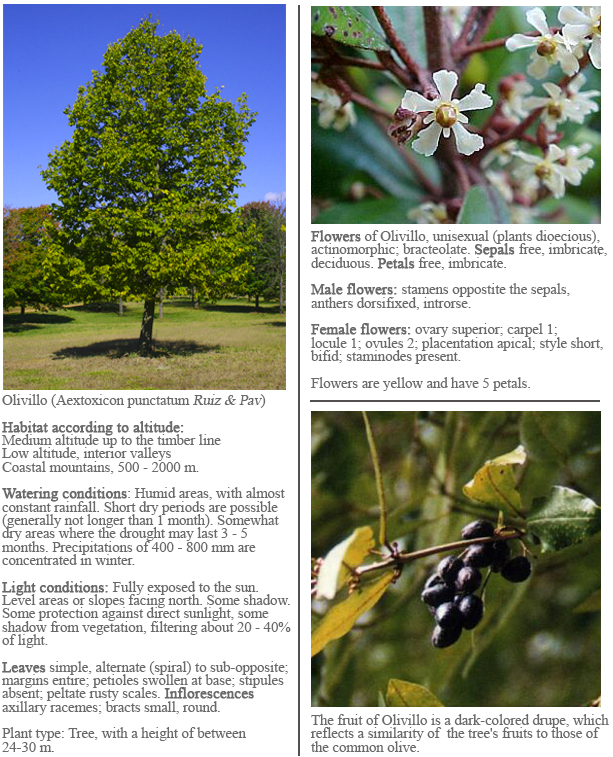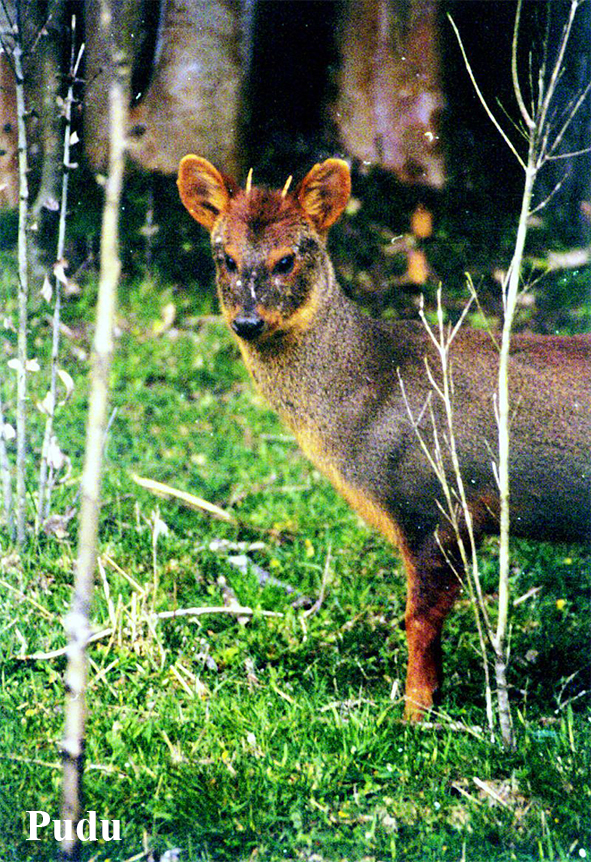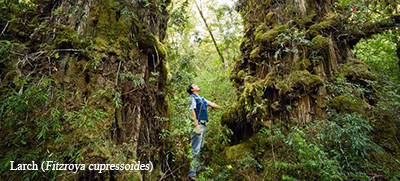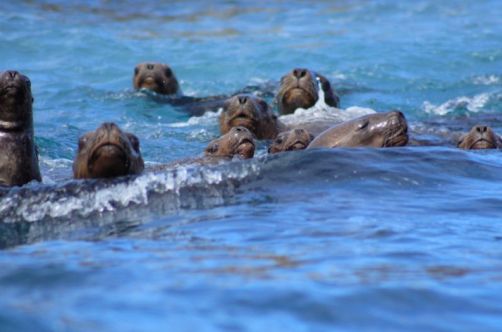Valdivian Coastal Reserve
Description
Southern Chile has a diverse ecosystem along its narrow strip of land crowded between the Andes Mountains and the Pacific Ocean. This area contains the world’s second largest temperate rainforest and the only one in South America.  The World Wildlife Foundation (WWF) has designated the area Valdivian Ecoregion. The Lakes District lies to the east, the Pacific Ocean to the west, and Patagonia to the south. In 2003 the World Wildlife Foundation, The Natur
The World Wildlife Foundation (WWF) has designated the area Valdivian Ecoregion. The Lakes District lies to the east, the Pacific Ocean to the west, and Patagonia to the south. In 2003 the World Wildlife Foundation, The Natur e Conservancy, and other national and international organizations purchased 150,000 acres of land in Chaihuín, creating the Valdivian Coastal Reserve. This is a private reserve open to the public, with 23 miles of oceanfront and beautiful white sand beaches.
e Conservancy, and other national and international organizations purchased 150,000 acres of land in Chaihuín, creating the Valdivian Coastal Reserve. This is a private reserve open to the public, with 23 miles of oceanfront and beautiful white sand beaches.
Flora and Fauna
The Valdivian Coastal Reserve stretches about 36.5 kilometers on the coastline. Almost half of its extent are beaches, while the rest consists of forest-covered cliffs. The entire area is home to thousands of acres of temperate rainforest, five river basins and a great diversity of endemic species of flora and fauna. This coastal forest is a remnant of millennia past — when it was connected to the forests of New Zealand and Australia. In fact, some species are more closely related to species from those distant places rather than the Americas. During the last Ice Age, this coastal range served as a freeze-free refuge for a multitude of species found nowhere else on Earth.

Among these unique species are two of the planet’s longest living tree species. Olivillo trees (Aextoxicon punctatum Ruiz & Pav), which can live up to 400 years, survive in large stands only on the western slopes of this range, and larchs (Fitzroya cupressoides (Molina) I.M.Johnst.), which resemble North American giant sequoias, have life spans of up to 4,000 years.
Sectors
The reserve currently consists of six different sectors, which are the costal hamlet of Chaihuín (a name derived from the word 'Chaihue' which means straining weaved baskets of voqui - Boquila trifoliolata), where the administration of the reserve is located; the localities of Carimahuida (green hill); Lahual (larch grove); Pangui (puma, a large American feline mammal, Felis concolor); and the coastal areas of Hueicolla (originating from the word 'hueyco' which means small pond) and Colún (colored).
Access roads
The beach of the Chaihuín river is a favorite destination for day trippers and campers alike. The river contains an area where mussels are extracted. The fishermen all belong to a cooperative that protects the source from being over exploited.
The access from Valdivia has three alternatives:
1. Valdivia - Niebla: 17 km (10.5 mi) on an asphalt road (T-350). Niebla - Corral: waterway navigation by ferry, it's a 30 min journey. Corral - Chaihuín: 27 km (17 mi) on Route T-450, a coastal road that runs from Corral to the seaside village of Chaihuín, reliably passable all year round.
2. Valdivia - Paillaco Highway; take Highway 206 to Paillaco and at the road fork of Rincon de la Piedra follow Route T-60 via the Valdivia - La Union Highway, about a mile away there is a road crossing, take the right branch toward La Romaza by a dirt road until Corral. It's a 65 km (40 mi) trip that lasts about 90 min, with beatufil landscapes alongside River Tornagaleones. 
3. North entrance of Corral (Route T-450), following route T-47 at the Quitaluto zone straight to Chaihuín, it is a 24 km (15 mi) trip; however, it is suitable only for off-road vehicles or mountain bikes.
Across the bridge of the town of Chaihuín you may find the administration office of the Valdivian Coastal Reserve. The town lies next to the neighboring communities of Huiro, Huape and Cadillal. When going to the Valdivian Coastal Reserve you have the chance to visit one of the 34 global biodiversity hotspots (Conservation International) and one of the 200 priority ecosystems (WWF).
 Trail
Trail
From the Pudu (Pudu puda) - Latin America's smallest deer - to the black or Magellanic woodpecker (Campephilus magellanicus) - the world's largest woodpecker - the Valdivian Coastal Reserve offers a rich variety of wildlife, in addition to an amazing flora, with vast forests and larchs, the second longest living species in the world (up to 4,000 years).
A traditional walk on the Valdivian Coastal Reserve, this enchanting trail with striking scenery is located in "Máquina Quemada" and is approximately 3 km (2 mi) long. This trail leads you through an abundant native vegetation of Coihue (Nothofagus dombeyi), Chilean Myrtle (Arrayan - Luma apiculata), Luma (Amomyrtus luma) and long-leaved Mañío (Podocarpus salignus), amongst other specimens of the Valdivian forest.
You will also see impressive millenary Larch trees (Alerce - Fitzroya cupressoides) among which there is a specimen o f about 2000 years.
f about 2000 years.
Walking this trail offers you the opportunity to appreciate a panoramic splendor of this temperate rainforest, with waterfalls and streams running through an abundance of native species of the Chilean south, all covered with vines and ferns of more than 15 species of the Hymenophyllum genus.
During the walk it is possible to spot and photograph the Black (or Magellanic) Woodpecker as well as the Pitius Woodpecker, Chucaos and Rayaditos, amongst others. These species can be seen clearly as they sing their beautiful melodies that accompany the visitor along the path, creating a magic and harmonious atmosphere. There are around 77 animal species on the Reserve.
This trail can be easily walked by children from 7 to adults 77 years old. There are wooden rails that make the walk easier and safer. It is recommendable to hire a local guide who can take you on this trail at the Administration offices of the Reserve.
The Valdivian Coastal Reserve is a protected area integrated to the surrounding communities. It is intended to promote a protected landscape and seascape to contribute to the conservation of biodiversity of global importance.
Activities: Walk, photography, flora and fauna, bird and animal watching.
Web pictures: The Valdivian Coastal Reserve and Valdiviatouch designs.



